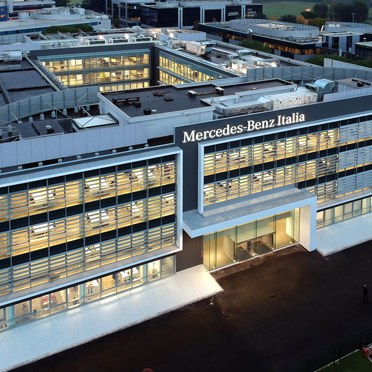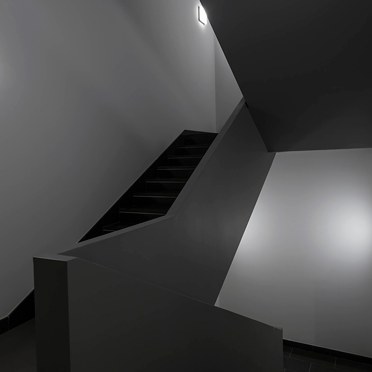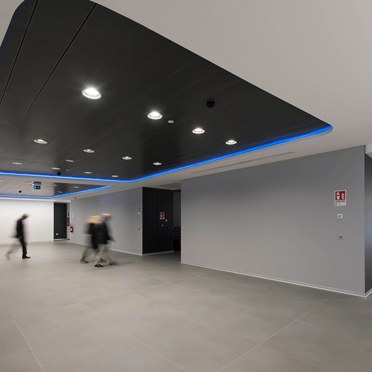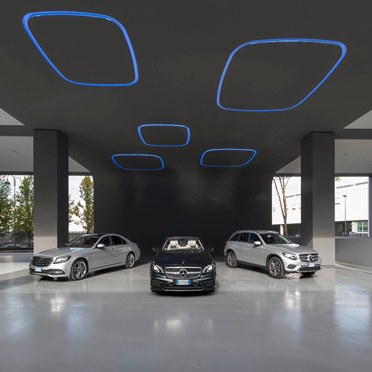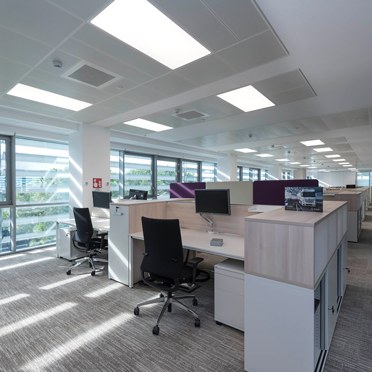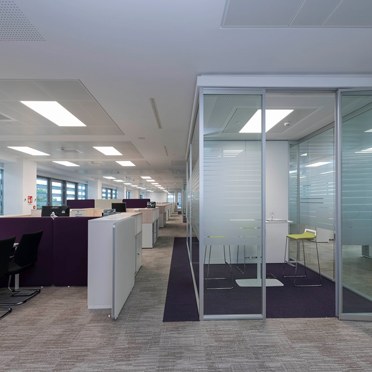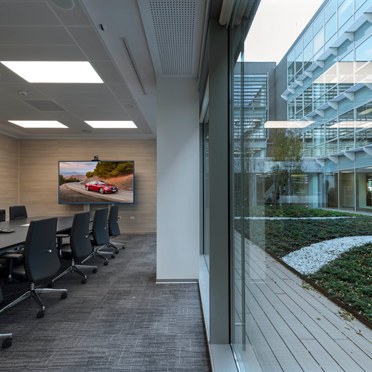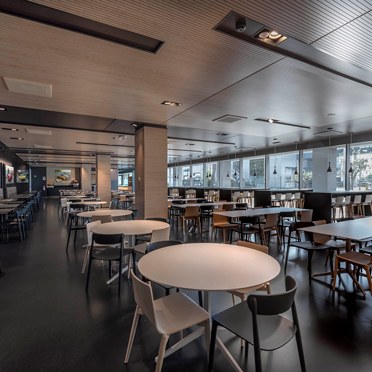Light that promotes wellbeing and productivity for Mercedes-Benz
- Lamp efficacy
Lamp efficacy
Ensuring the lamp efficiently converts electricity into light (lm/W).
- Ballast classification
Ballast classification
Controlling the electricity supply to the lamp (Energy Efficiency Index).
- Luminaire distribution
Luminaire distribution
Controlling light emission using optics which bend and shape the light to the correct location.
- System efficacy
System efficacy
Combining optical and thermal control within the luminaire (luminaire lm/W).
- Presence/absence detection
Presence/absence detection
Providing lighting only when it’s needed.
- Daylight detection
Daylight detection
Reducing waste light during daylight hours.
- Constant illuminance
Constant illuminance
Producing the correct lighting levels for the duration of the maintenance period.
- Task-scene setting
Task-scene setting
Allowing the user to set scenes and adapt the lighting to different tasks.
- Timed off
Timed off
Automatic cut-off to turn all lights off during unoccupied hours.
- Task lighting
Task lighting
Lighting task areas with the correct amount of light.
- Zoning of lighting
Zoning of lighting
Zoning lighting in accordance to occupancy patterns or window location.
- Maintenance schedule
Maintenance schedule
Tailoring maintenance schedules in accordance to product age, performance and environment.
- Waste light
Waste light
Eliminating waste light which does not hit the intended target.
- Reflectance
Reflectance
Taking advantage of light which is reflected from the surface within the space.
- Visible smart metering
Visible smart metering
Enabling results of actions to be quickly seen as increased or decreased energy use to encourage responsible energy consumption.
The challenge
Mercedes-Benz’s Italian headquarters in Rome has recently been extensively rebuilt, with six existing buildings reconfigured and combined into one. The new open workspaces have been designed by architecture practice MPPM, with great attention paid to flexibility and modularity. The main design objective was to create a welcoming and efficient workspace, where wellbeing and productivity can be combined. From this point of view, the use of natural and artificial light were key concerns.
The lighting solution
Thorn and its sister brand Zumtobel teamed up to develop a specific lighting solution for each room of the new building, to create the right lighting ambience.
On the three upper floors, which house most of the offices and services, Thorn Lighting’s Omega LED fitting is integrated in the modular ceiling system. These large recessed luminaires feature optimum optics and technical specifications for this type of application.
On the ground floor are the main entrance hall, lobbies, conference area, company restaurant and a large exhibition area. The main entrance hall has been illuminated by integrating the luminaires into the architectural structure in order to better accompany the forms and enhance the materials used.
A number of luminaires from Thorn’s sister brand Zumtobel were used, including Panos Infinity,Tecton, Supersystem II and Introand Craft.
The result
The new lighting at Mercedes-Benz HQ contributes to a welcoming and efficient new workspace, where personal wellbeing and company productivity can be combined.

